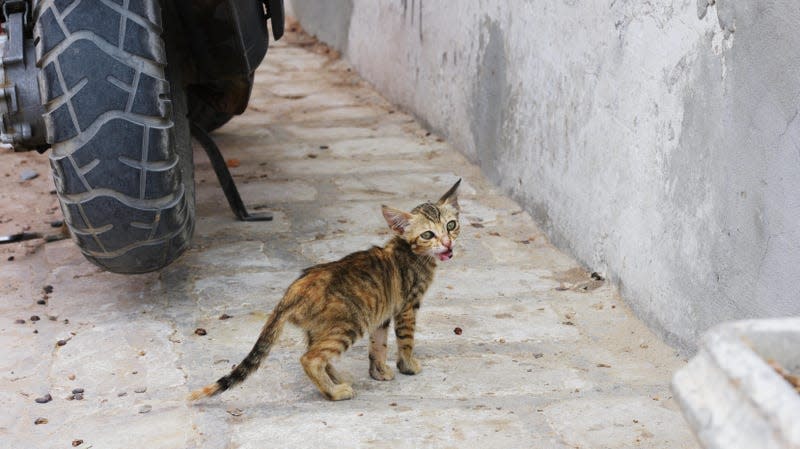Girl Catches Rare Bone Infection From Kitten

A teen girl’s kitten turned out to cause much more trouble than usual. In a new case report this month, doctors in Portugal describe how the cat likely transmitted an usually mild germ that caused the girl to develop a serious and rare bone infection. Thankfully, once the infection was identified and treated, the girl recovered fully.
The feline fiasco was detailed earlier this month in BMJ Case Reports by doctors in Portugal. According to the report, the girl visited doctors with severe pain in her right abdomen and afever. She reported no recent travel or contact with animals, at least initially. A physical examination failed to find any clear culprit behind her symptoms, but a medical scan revealed an abscess—pockets of pus, usually caused by a bacterial infection—along the tissues that surround the spinal cord as well as bone erosion.
The doctors ruled out some potential causes of the infection and a second CT scan allowed them to collect a sample of the abscess, which tested positive for Bartonella bacteria. At that point, the family recalled to the doctors that they had “a young cat some time before.” With that final clue in place, the doctors diagnosed the girl as having caught an unusual case of cat scratch disease.
Cat scratch disease is caused by Bartonella henselae, rod-shaped bacteria that survive by hiding and replicating inside other cells, much like viruses. Though cats are a common vector for these infections, with the germ lurking in their saliva, B. henselae and related species can also be spread through dogs or parasites like ticks, fleas, and lice.
Bartonella infections usually don’t cause severe illness in otherwise healthy people, though they can be dangerous in those with weakened immune systems (some evidence has also suggested that they can very rarely trigger psychiatric illness). The most common symptoms of cat scratch fever specifically are enlarged lymph nodes, rashes, and fever. So the girl’s bone infection, also known as osteomyelitis, is an especially rare complication, with reported rates hovering between 0.17% to 0.27% of diagnosed cases.
Because Bartonella bacteria live inside our cells, it can be difficult to diagnose these infections and treat them successfully with antibiotics. But in this case, the girl made a complete recovery following treatment with doxycycline and rifampicin.
“Cat scratch disease is a challenging diagnosis in the absence of typical features,” the doctors wrote. “However, B. henselae must be investigated if common pathogens are ruled out and response to therapy is poor.”

